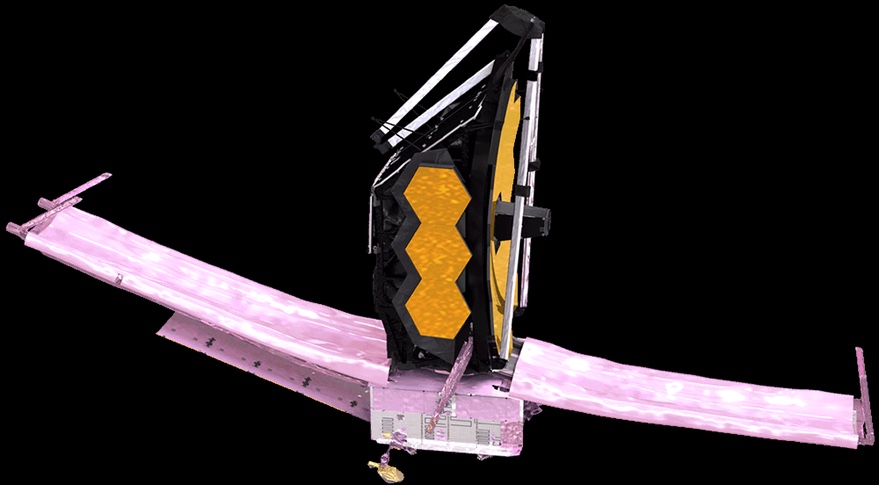WASHINGTON — NASA’s James Webb Space Telescope has started the process of deploying the sunshield required to keep the spacecraft cold enough to operate, a process that is one of the riskiest aspects of the mission.
NASA announced Dec. 28 the spacecraft controllers had started the multiday process of deploying the sunshield by lowering two components called Unitized Pallet Structures, one on the front side of the spacecraft and the other on the back. The front structure locked into position at 1:21 p.m. Eastern, followed by the rear one about six hours later.
The structures contain the five-layer aluminum-coated Kapton sunshield. Once deployed, the sunshield will block sunlight from reaching the telescope and its instruments, allowing them to cool to their operating temperature of –233 degrees Celsius. Those cold temperatures are required for the telescope to function effectively for infrared observations.
The lowering of the structures is only the start of a complex process to deploy the sunshield. After the tower that holds the telescope is extended, a process scheduled for Dec. 29, the sunshield covers will release the next day. Booms on the left and right sides of the spacecraft will extend a day later, after which cables will shape the five layers into their final form.
The projected timeline for the mission calls for the sunshield deployment process to be completed Jan. 2. However, project engineers cautioned before the launch that deploying the sunshield was perhaps the most difficult process of the overall commissioning of JWST.
“The sunshield is one of those things that is almost inherently indeterministic,” said Mike Menzel, lead mission systems engineer for JWST at NASA’s Goddard Space Flight Center, during a November briefing. “The sunshield is one that has some risk to it.”
At that same briefing, Krystal Puga, JWST spacecraft systems engineer at Northrop Grumman, compared the sunshield deployment process to a “Rube Goldberg machine” in that each step of the deployment triggers the next, using a combination of cables, pulleys and motors.
She added, though, that she was confident that the sunshield will deploy as designed despite that complexity. “We performed multiple deployment testing over several years on both small and full-sized models,” she said. “This gives us the confidence that Webb is going to deploy successfully.”
